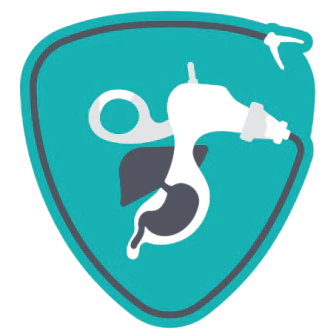“ Roughly one-quarter of women in the United States over 18 report having this disorder and experts anticipate the number to increase by 50 percent by 2050.” This seems like a threatening condition, but it is least discussed among the women- Pelvic Organ Prolapse. Imagine your daily activities like walking, climbing stairs, or even laughing becoming uncomfortable. This is the reality for many women facing pelvic organ prolapse (POP), a condition where the pelvic floor muscles and tissues weaken, causing organs like the uterus, bladder, or rectum to dip down from their normal positions. Let’s delve deeper into this topic, exploring the causes, symptoms, and treatment options for pelvic organ prolapse.
What is Pelvic Organ Prolapse?
A pelvic floor is a group of muscles, ligaments, and connective tissues that act like a hammock, supporting your bladder, uterus, rectum, and small intestine. When these tissues weaken or become stretched, they can no longer hold the organs in place, leading to a prolapse. This can affect any of the pelvic organs, with the most common types being:
- Cystocele: The bladder bulges into the vagina.
- Uterine Prolapse: The uterus descends into the vagina.
- Rectocele: The rectum bulges into the vagina.
Causes of Pelvic Organ Prolapse
Several factors can contribute to pelvic floor weakness and increase the risk of prolapse. These include:
- Childbirth: Vaginal delivery, especially with large babies or multiple births, can stretch and weaken the pelvic floor muscles.
- Age: As we age, the natural production of collagen and elastin, proteins that provide strength and elasticity, decreases, weakening the pelvic floor.
- Chronic Straining: Activities that involve straining, like chronic constipation or heavy lifting, can put additional pressure on the pelvic floor.
- Obesity: Excess weight increases the pressure on the pelvic floor muscles.
- Genetics: Some women may be genetically predisposed to weaker pelvic floor muscles.
Symptoms of Pelvic Organ Prolapse
POP can present with a range of symptoms, depending on the severity of the prolapse and the affected organ. Here are some common signs:
- A feeling of heaviness or pressure in the pelvis
- Difficulty urinating or starting a stream
- Frequent urination or leaking urine (stress incontinence)
- Incomplete emptying of the bladder
- Difficulty passing stool or a feeling of incomplete bowel emptying
- Backache, especially in the lower back
- Painful intercourse
Treatment for Pelvic Organ Prolapse
POP can be managed effectively through various treatment options depending on the severity of the condition and your individual needs. These can include:
- Pelvic Floor Muscle Exercises (Kegels): Strengthening the pelvic floor muscles is a cornerstone of treatment. Kegel exercises help tighten and improve the tone of these muscles, offering better support for the pelvic organs.
- Lifestyle Changes: Maintaining a healthy weight, eating a high-fiber diet to prevent constipation, and avoiding heavy lifting can significantly improve symptoms.
- Pessaries: These are medical-grade devices inserted into the vagina to provide support for the pelvic organs.
- Surgery: In some cases, surgery might be recommended to repair the weakened pelvic floor muscles or reposition the prolapsed organ.
Prevention is Key
While certain risk factors like age and genetics can’t be controlled, many strategies can help prevent or minimize the severity of prolapse:
- Pelvic Floor Exercises (Kegels): Begin incorporating Kegel exercises into your routine, even before pregnancy or childbirth. These exercises strengthen the pelvic floor muscles, promoting better support for your organs throughout your life.

- Maintain a Healthy Weight: A healthy weight reduces the strain on your pelvic floor muscles.
- Manage Chronic Conditions: Address chronic constipation or coughing to avoid straining.
- Lifting Techniques: Learn proper lifting techniques to prevent placing undue stress on your pelvic floor.
- Seek Guidance During Pregnancy: Discuss pelvic floor health with your healthcare provider during pregnancy and postpartum.
Pelvic organ prolapse is a common condition, affecting millions of women worldwide. However, it’s important to remember that you’re not alone. Open communication with your healthcare provider is crucial for diagnosis and early intervention. POP is not something to be ashamed of, and seeking help allows for treatment and a return to a healthy, active lifestyle. By raising awareness and openly discussing this condition, we can empower more women to take control of their well-being and live fulfilling lives.

